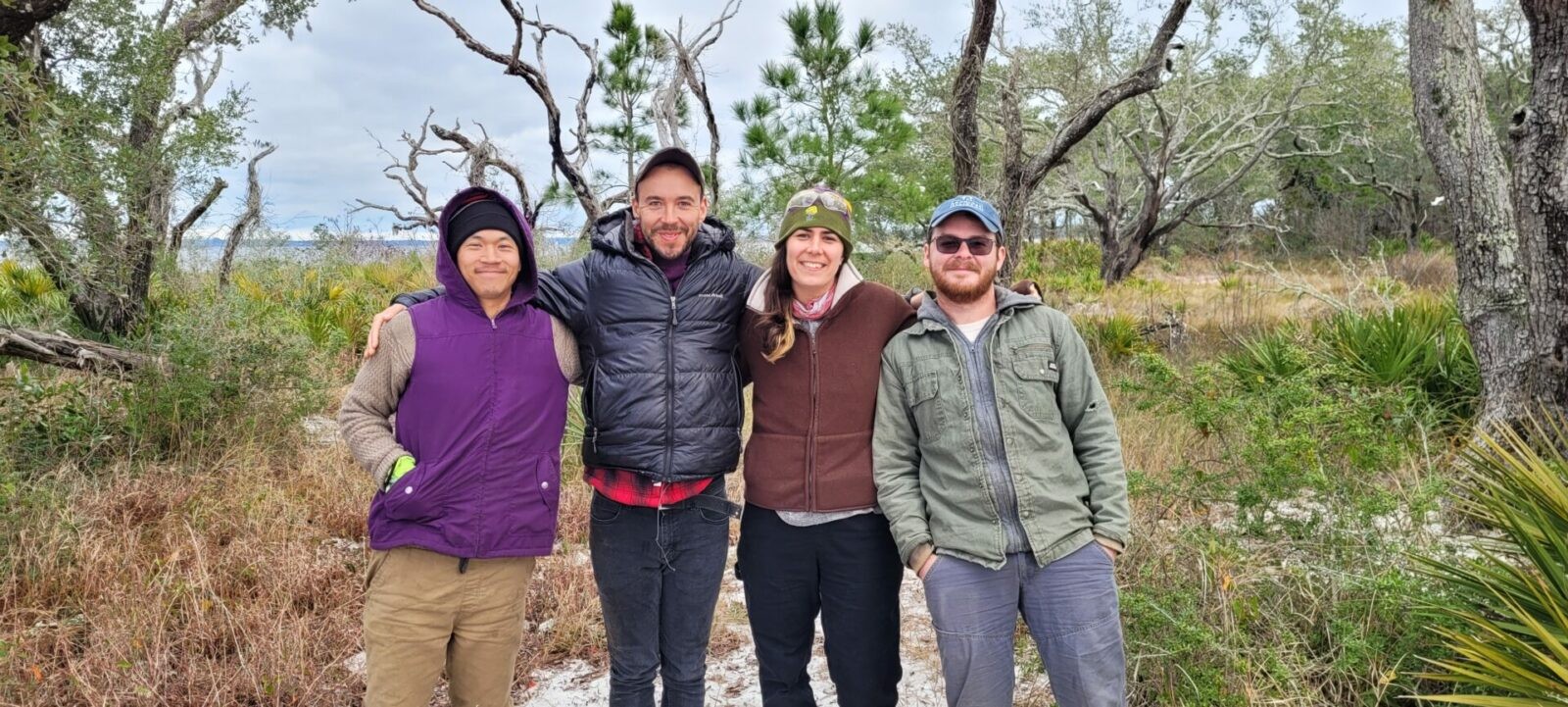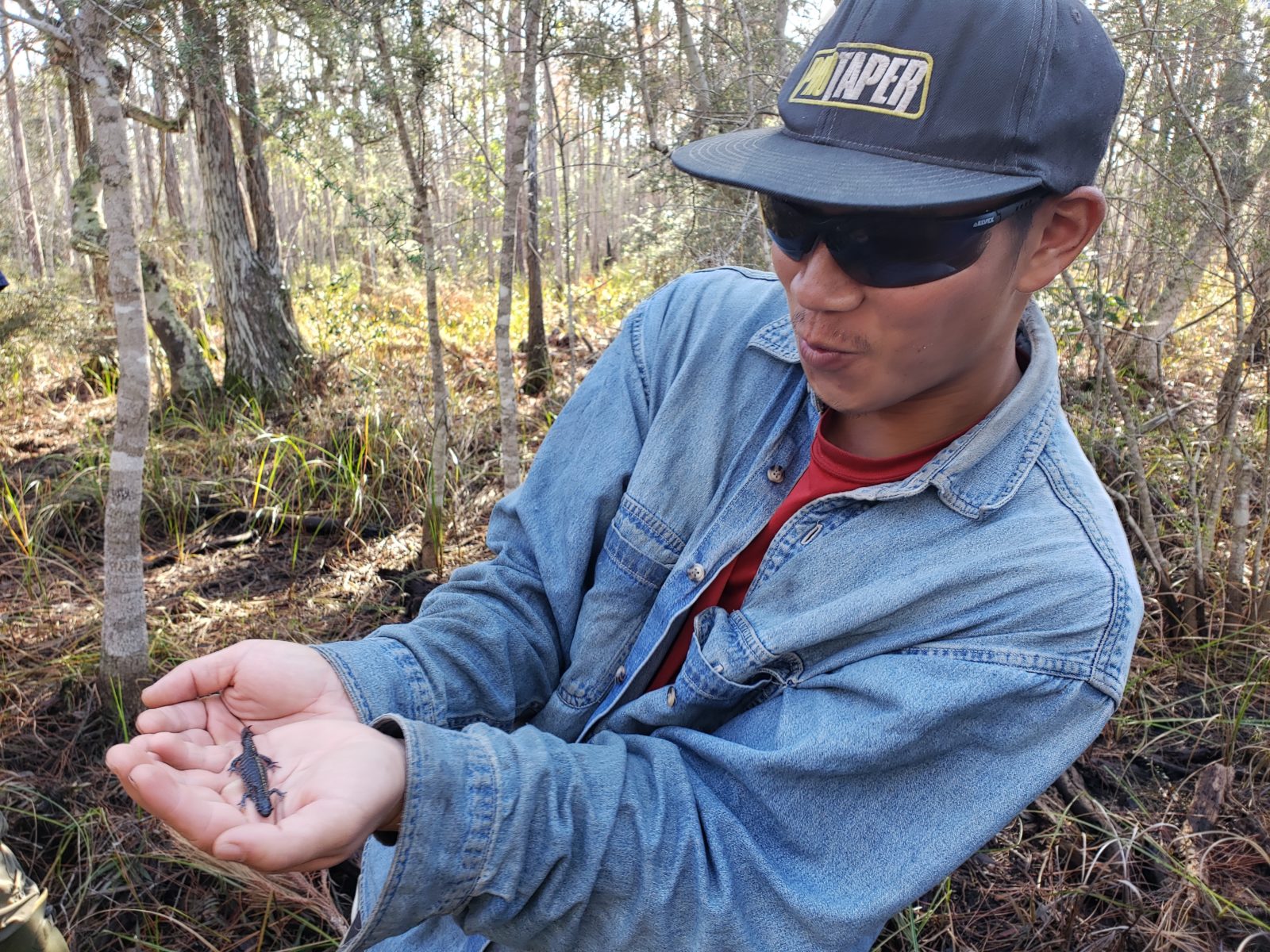Welcome A.R.T. – TLA’s New Field Team Assists Reticulated Flatwoods Salamander Recovery
February 2, 2023

The Longleaf Alliance is excited to introduce our new field team assisting the reticulated flatwoods salamander project on Escribano Point Widllife Management Area in Florida.
The Ambystoma bishopi Restoration Team, or A.R.T. for short, will be part of the greater AMBBIS team and primarily work on wetland restoration goals for the reticulated flatwoods salamander.
This full-time team consists of all returning staff: Haley Welshoff, A.R.T crew lead, and biological restoration technicians Abe Huang, Kameron Burgess, and Sean Seid. These veteran team members have certainly gotten wetland restoration down to an ART-form
A.R.T. will also assist with reticulated flatwood salamander monitoring as well as participate on long-awaited prescribed burning on Escribano Point. Many TLA staff have put years of literal blood, sweat, and tears into restoring that unique area and are looking forward to continue this critical work.
About the Reticulated Flatwoods Salamander
The reticulated flatwoods salamander historically occurred throughout the Florida Panhandle west of the Apalachicola River. This species has drastically declined, and only a few populations remain. It is now considered federally endangered.

The flatwoods salamander requires fire-maintained pine flatwoods for survival. They rely on terrestrial and aquatic habitats to support their complex life cycles, developing from egg to larvae in seasonal wetlands and then emerging into longleaf pine stands as newly developed adults.
Read more about how the Gulf Coastal Plain Ecosystem Partnership is collaborating to restore and protect this endangered salamander.






